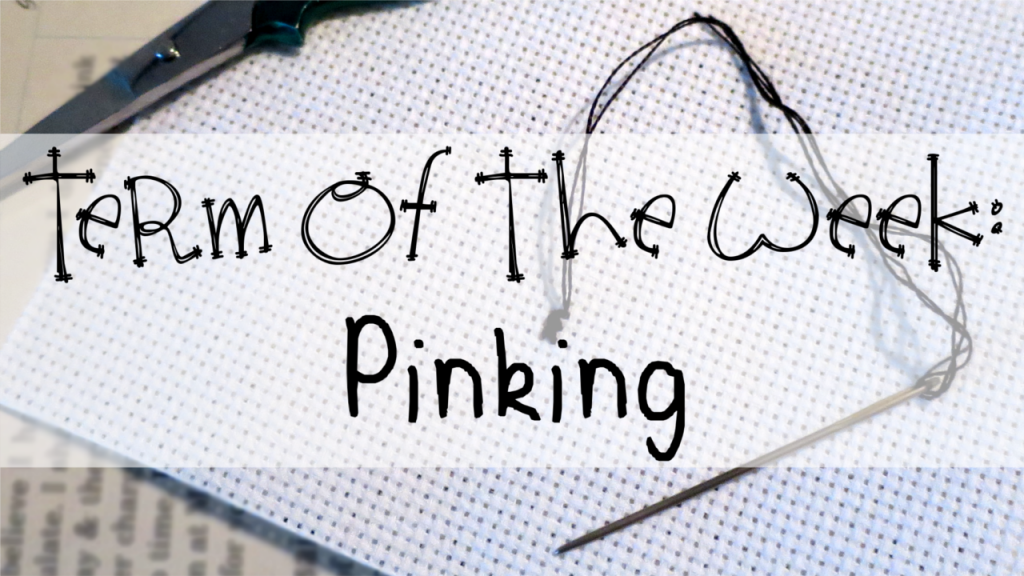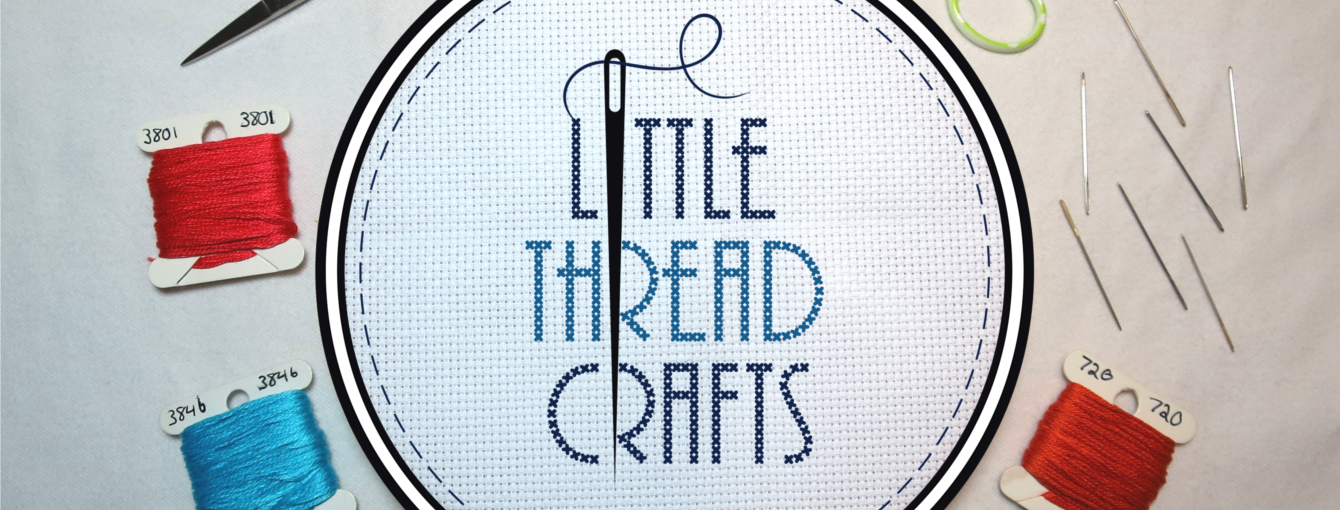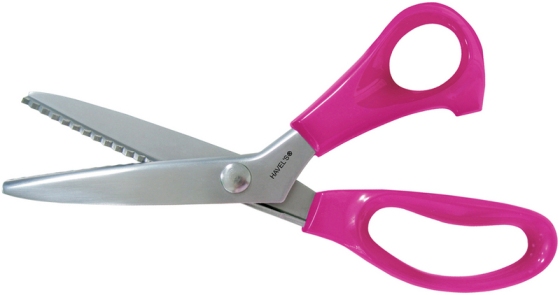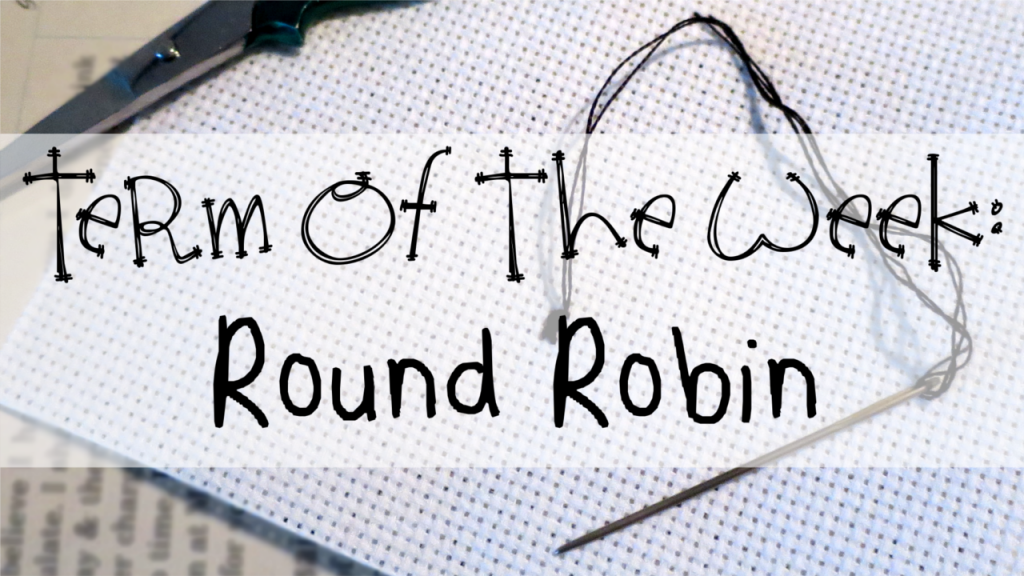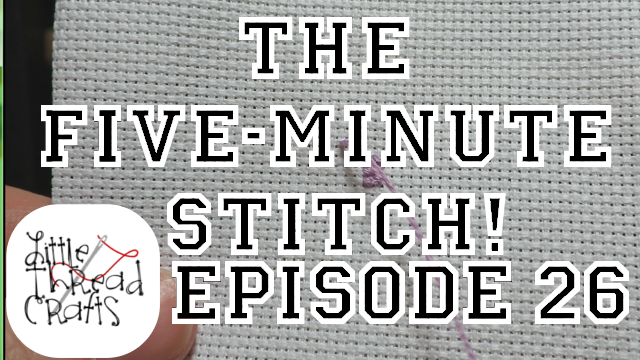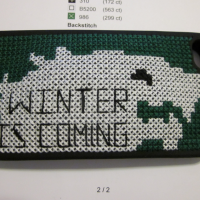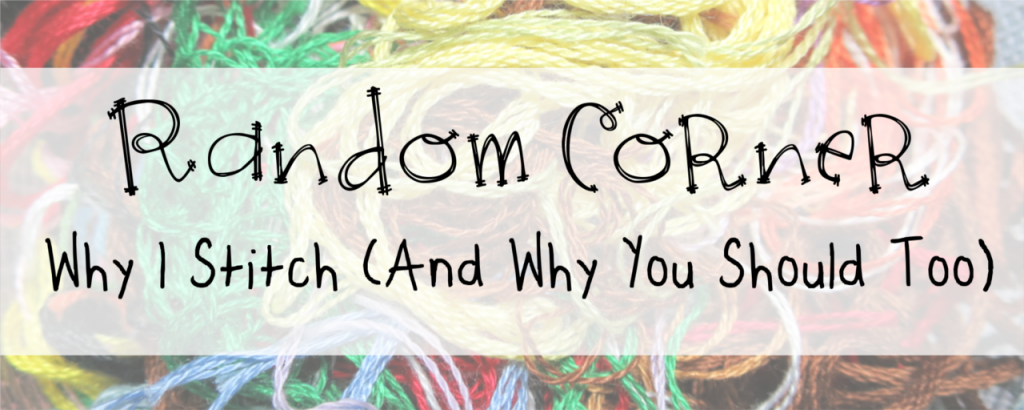
I’ve thought a lot today about why I stitch. Not for any particular reason, I just tend to get introspective sometimes. Why do I stitch? What enjoyment do I get from a craft that forces me to sit still for several hours, entirely focused on needle and thread, counting and making small ‘x’s on fabric to form a picture?
The answer to this is different for everyone. For me in particular, it comes with a story.
I’ve cross-stitched since I was eight years old, but during the teenager years I didn’t do a lot of stitching. I had better things to do with my time like play video games or surf the Internet. Typical teenager stuff. And when I was 16, I hit a rough patch like a typical teenager does. Except mine was anything but typical.
It was a chemical imbalance that caused a whole host of problems: I was under high levels of stress and unable to manage it effectively, I was constantly ill with one thing after another, and I sank into a depression that lasted more than a year. I ended up seeing a doctor for one of my problems and the medication they gave me helped right the chemical imbalance and the rest went away on their own, with a few relapses every now and again.
But for that year, it felt as if my world crumbled around me and I lost passion for every single hobby I participated in up to that point. I no longer enjoyed anything. I didn’t feel as if I liked anything I use to like. I had nothing to turn to as a pick-me-up or a distraction. I dropped all my hobbies and activities. When I came out on the other side of the depression wall a year later I was at square zero with nothing to keep myself occupied.
Stitching has always been an activity at the back of my mind. Something I always thought about but rarely did. Since I had nothing else to do, I dug out my stitching stuff and went through it to see what I had left from when I was a kid. I didn’t have much, but I did have a few mini-kits. And I picked up the needle again.
When someone asks me why I stitch, I tell them it’s a stress reliever. That’s true for a lot of people. When you make any sort of craft – and I feel this is especially true for cross-stitch – you fall into a mindless rhythm. If I’ve got my count down and I’m in a block of color my fingers move on their own. But when I’m counting or I’ve got to watch my stitches, it’s the only thing I can focus on – it physically prevents me from other thoughts. I’m a dweller, a worrier; I have mild anxiety where a thought or action can leave my stomach in knots for hours. But when I stitch, I don’t overthink about things. I can’t. I’ll mess up my count.
When someone asks me why I stitch, I tell them it’s an art where you don’t have to be an artist. I definitely have mastery over the keyboard more than the pen. I can’t draw a straight line. I barely color within the lines, and I never liked to use paint. I can’t dance, I can’t create professional music. When I see beautiful works of art I feel envious: I wish I could do what they do. And yet, cross-stitch is one of the oldest forms of needlework on the planet. Cave people sewed ‘x’s into cloth while others painted the cave walls. I create a work of art made of needle and thread with every up and down motion of the needle, with every ‘x’ I make. I don’t have to have a steady hand or a keen eye or a healthy body. I just need patience, fabric, a needle, and thread.
When someone asks me why I stitch, I tell them I can create a work of art that will last for centuries. It may never hang in a museum like a Da Vinci or a Picasso, but if time and luck and fate permits it will hang on someone’s wall long after I’m gone. I don’t expect my piece of a cutesy butterfly to go down in history but it’s already been proven cross-stitch is an artwork that stands the test of time. Women and men have practiced the art since before we had words to write about it, and I am proud to say I can carry on that tradition. It may seem unpopular or unknown, but the art of cross-stitch and other needlework will never die out.
When someone asks me why I stitch, I tell them it’s because a needle and thread doesn’t care you who are. The stitching community doesn’t care who you are. Man, woman, young, old, thin, fat, healthy, sick, formally educated or self-taught… the people are as diverse as the craft. We all have different tastes and there is a piece that will suit you. I am a young, twenty-something woman with a myriad of health issues and no formal secondary education. The needle doesn’t care. Cross-stitch and the community built around it is so remarkably accepting in a world that divides itself over pretty much everything. Anyone can learn the craft or pick up a needle. It doesn’t matter who you are.
Stitching certainly isn’t for everyone; nothing is. But I personally have fallen head over heels in love with all of it. It became my pick-me-up, my distraction from reality. I have pushed myself above and beyond what I expected when I made my first stitch after so many years. The power of creation is in my grasp. I want to share this joy with everyone! And if I’ve encouraged even just one other person to start stitching again, or enticed someone to look into starting… then that’s a victory for me.
This is why I stitch. Why do you?
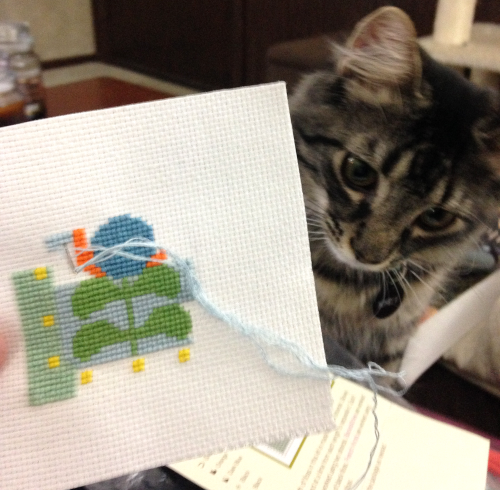
My kitten and I working on my latest project.
—————————————————————————————————–
“Random Corner” is a place for all articles related to all manners of cross-stitchery and the cross-stitch community that don’t fall into the topics covered in the regular segments. There is no set schedule for Random Corner articles, they’re just random!
By the way – to keep up on Little Thread Crafts stitching news and get pictures, updates, and more that don’t appear on the blog until much later, follow me on Facebook, Twitter, and Instagram! I would greatly appreciate it!
